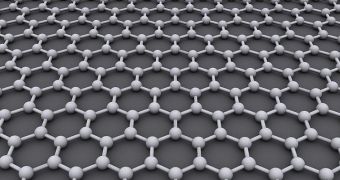Experts at the University of Manchester in the United Kingdom, who developed graphene back in 2004, will present more data on the vast potential this material has today, July 5. Professors Andre Geim and Kostya Novoselov are leading the presentation.
The two experts were jointly awarded the 2010 Nobel Prize in Physics, “for groundbreaking experiments regarding the two-dimensional material graphene.” The 2D carbon compound had been hypothesized for years, but no one was able to obtain it until 7 years ago.
Now, the scientists are back with an even deeper insight into the chemical and physical properties of this amazing material. Graphene is already widely used to create touch screens, transistors and aircraft wings, but scientists are aware that they've only scratched the surface of what it can do.
New data about the carbon compound will be presented in front of scientists attending the Royal Society's annual Summer Science Exhibition. During the conference, the experts will even teach members of the audience how to produce graphene themselves.
Back in 2004, the two first created the material by applying Scotch tape to graphite (pencil lead), and then peeling away slightly. Among multiple graphite layers, they also found single layers of carbon atoms, organized in regular, hexagonal patches – graphene.
“This is a great opportunity for us to present some of our groundbreaking work to the general public in what we hope is an interesting and entertaining way,” conference attendant Dr Ernie Hill comments.
“The story of how Andre and Kostya produced this remarkable material is inspirational for any youngster wishing to enter research as a career and indeed to anyone with an interest in scientific discovery,” he goes on to say.
“Charge carriers in graphene appear to have no mass and can travel very large distances without being scattered. This makes it a good testing ground for interesting quantum effects and gives it many applications for fast electronics,” EurekAlert reports.
The material also makes an excellent chemical detector. Experts refined graphene-based sensors to such an extent that they can now detect even a single molecule of a target chemical as it attaches to the compound. This has tremendous applications in the field of personnel and airport security.
At this point, experts are convinced that graphene will eventually replace silicon as the main material for building computer chips. Yet, the international scientific community recognizes the need for conducting more studies into the nature of this innovative material.

 14 DAY TRIAL //
14 DAY TRIAL //